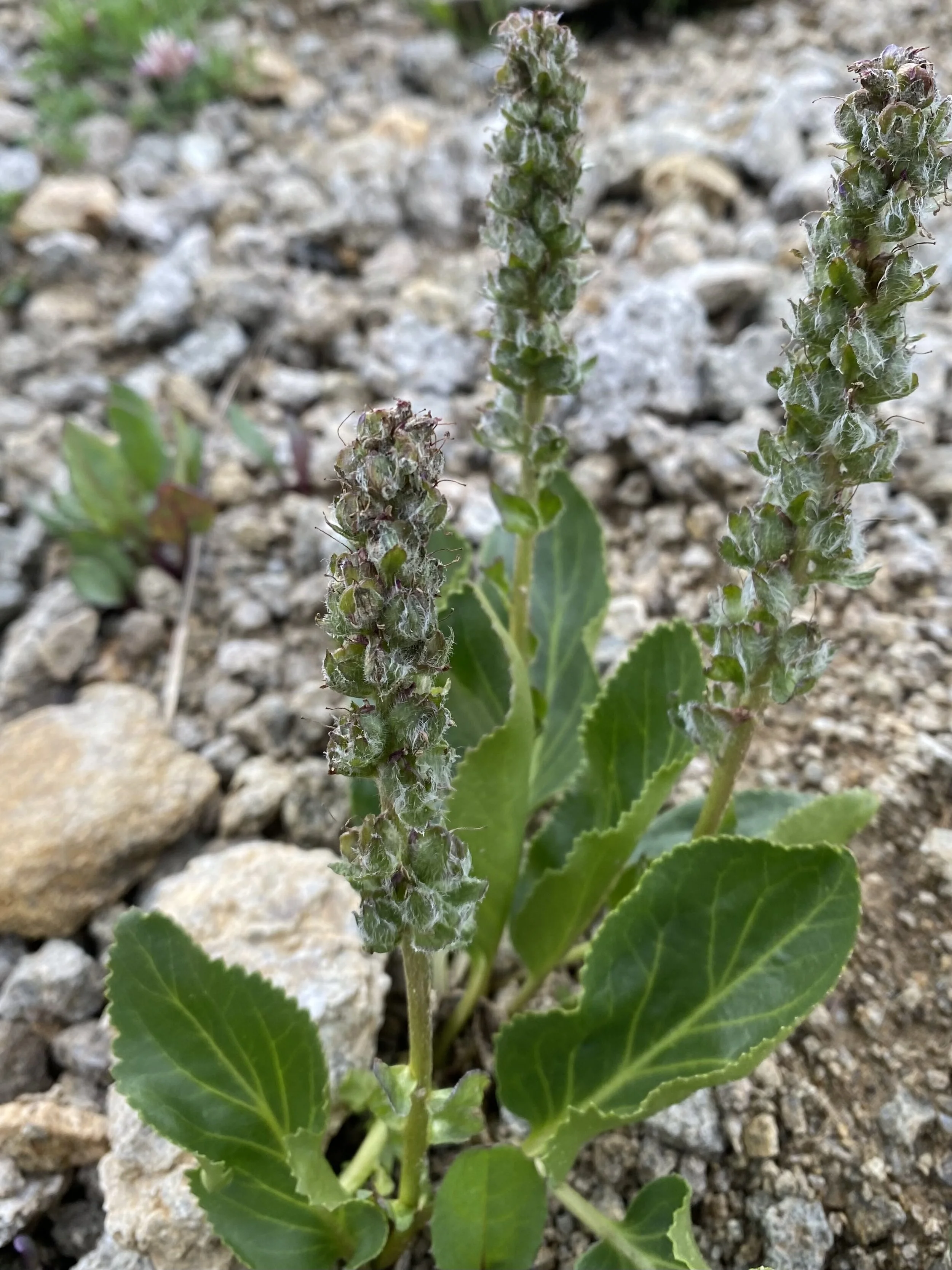Besseya ritteriana/plantaganea, July 22, 2021
B. ritteriana/plantaginea, July 22, 2021
Common & scientific name
Ritter’s kittentails, Besseya ritteriana OR White River kittentails, Besseya plantiginea
Family
Plantain, Plantaginaceae
Location
Grizzly ridge, 12,500’
Fun, weird, helpful, or little known fact
I found this plant post-bloom, making certain ID difficult. Using Jennifer Ackerfield's Flora of Colorado, the latest, comprehensive treatment of Colorado plants, as a reference, her description of the two (B. plantginea & B. ritteriana) identifies the only significant differences between the two as (1) their elevational ranges (former up to 11,000', latter up to 12,500', which is where I found this plant), (2) their locations (former recorded in Pitkin County, where I found this plant, latter not), and (3) the color of their corollas (the former white or pinkish to purplish tinged, the latter pale yellow). The plants also have differently-colored filaments (the stalk of the stamen, the male pollen-bearing organ), purple and white, but by the time I saw it the filament was brown. Looks like I'll need to return earlier next summer to see it in bloom!

































